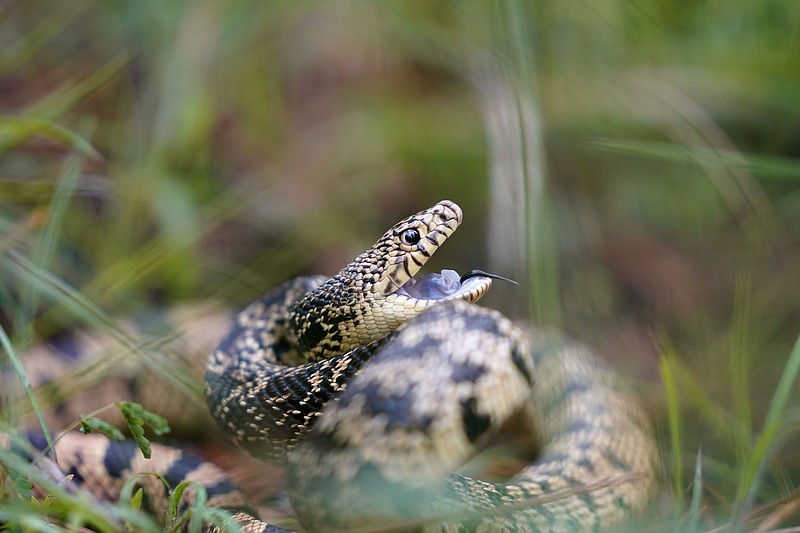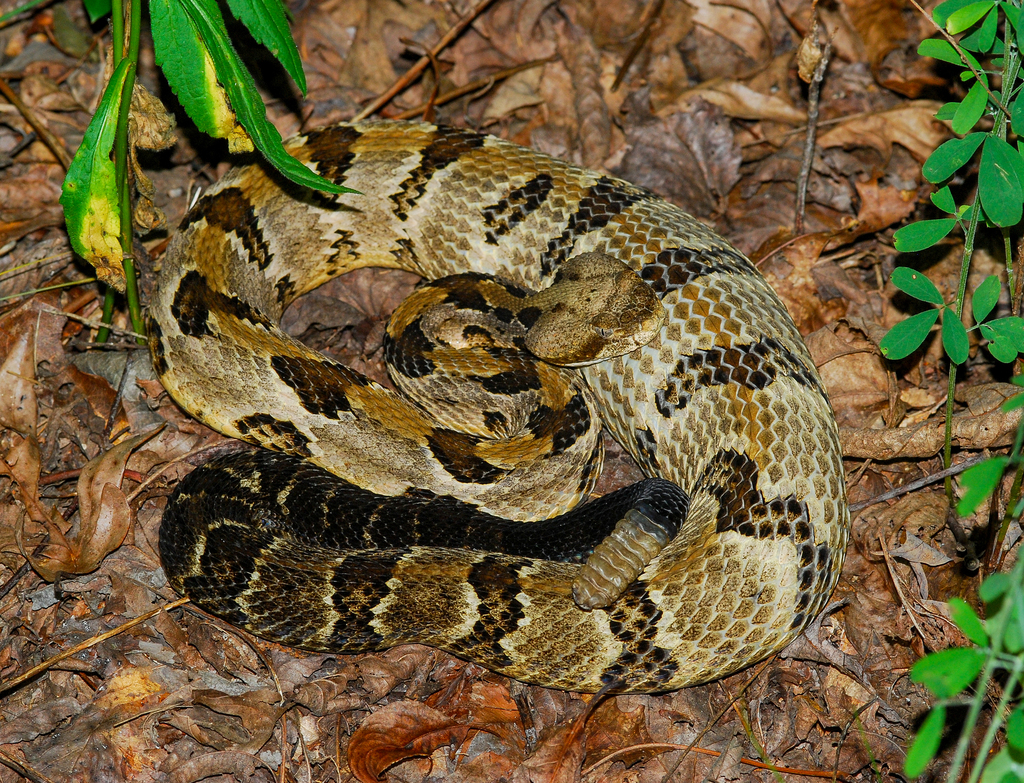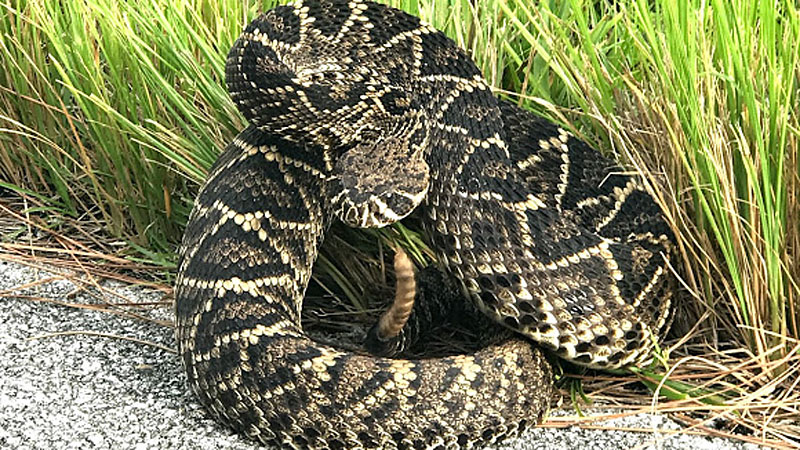Louisiana is home to a diverse range of wildlife, including several species of venomous snakes. Among these snakes are three types of rattlesnakes that can be found throughout the state. These rattlesnakes are known for their distinctive rattle, which serves as a warning to potential predators.
In this article, we will explore the three types of rattlesnakes found in Louisiana, including their habitats, physical characteristics, and behaviors. By the end of this article, you will have a better understanding of these fascinating and potentially dangerous creatures that call Louisiana home.
You are reading: Discover The 3 Types Of Rattlesnakes In Louisiana

3 Types Of Rattlesnakes In Louisiana
Timber Rattlesnake

The Timber Rattlesnake, also known as the Canebrake Rattlesnake, is one of the three types of rattlesnakes found in Louisiana. Here are some key details about this species:
– Habitat: Timber Rattlesnakes can be found in a wide variety of habitats in Louisiana, including swamps, river floodplains, forests, and rural farming areas. They are not as common in southwestern Louisiana or along the coastline.
– Distribution: This species is found in most of Louisiana, except for the coastal marshes. They also occur on the salt dome islands around Cote Blanche Bay and adjacent high ground from Morgan City to.
– Conservation Status: Timber Rattlesnakes have a ranking of S3S4, which means they are considered rare and local throughout the state, with 21-100 known extant populations.
– Physical Characteristics: Timber Rattlesnakes are medium to large in size, with adults typically ranging from 3 to 5 feet in length. They have a series of dark, brownish-black crossbands on a lighter background color, which can vary from yellow to gray.
– Behavior: Like other rattlesnake species, Timber Rattlesnakes use their rattle as a warning to potential predators. They are generally docile and will only strike if they feel threatened or cornered. When hunting, they rely on their heat-sensing pits and flicking tongue to detect prey, which primarily consists of small mammals.
Eastern Diamondback Rattlesnake

The Eastern Diamondback Rattlesnake, or Crotalus adamanteus, is the largest venomous snake in North America and one of the three types of rattlesnakes found in Louisiana. Here are some key details about this species:
– Habitat: Eastern Diamondback Rattlesnakes are found in a variety of habitats, including dry pine flatwoods, sandy woodlands, coastal scrub, wet prairies, savannas, and the borders of wetlands. They can also be found in abandoned farms or overgrown fields near pine forests.
– Distribution: This species is endemic to the southeastern United States, including the pinelands of Florida, the coastal plains of North Carolina, southern Mississippi, and eastern Louisiana. However, it is believed to be extirpated in Louisiana, with the last observation in 1995.
– Conservation Status: The Eastern Diamondback Rattlesnake is not currently listed as endangered, but its population is decreasing. In North Carolina, it is protected by state law and considered endangered within the state.
– Physical Characteristics: These rattlesnakes are the largest of the 32 recognized species of rattlesnakes, with adults averaging 3 to 6 feet in length and some reaching up to 8 feet. They have a stout, heavy-bodied appearance and are known for their pattern of yellow-bordered, light-centered black diamonds, which makes them one of the most strikingly adorned North American reptiles.
– Behavior: Eastern Diamondback Rattlesnakes are not usually aggressive and are highly averse to human contact. They will only attack in defense, and most bites occur when humans taunt, try to capture, or kill a rattlesnake. When hunting, they can accurately strike at up to one-third of their body length and release a significant amount of venom with each bite, making them a deadly snake. After striking, they release their prey, allowing it to crawl away and die before pursuing and consuming it.
Western Pygmy Rattlesnake
The Western Pygmy Rattlesnake (Sistrurus miliarius streckeri) is a venomous pit viper subspecies found in the southcentral United States. Here are some key characteristics and information about this snake:
– Description: The Western Pygmy Rattlesnake is a small, colorful rattlesnake with a slender tail and a tiny rattle. It is one of the smallest species of rattlesnake in North America. Its general color is brownish, and it has a gray to pinkish body with dark blotches down its back and one to three rows of dark spots along each side of the body.
– Geographic Range: The Western Pygmy Rattlesnake is found in the southcentral United States, including extreme southern Missouri along the border with Arkansas, the eastern Missouri Ozarks, St. Francois Mountains, and the western Highland Rim in Tennessee.
Read more : 5 Types Of White Caterpillars
– Habitat: This snake is most often observed in or near glades, in second-growth forests near rock ledges, and along the area between forests and open lands. Its preferred habitat is south-facing, rocky, and partially wooded hillsides. It is usually found in close proximity to water, such as flood plains, wetlands, and moist fields.
– Diet: The Western Pygmy Rattlesnake prefers frogs, lizards, small snakes, amphibians, and small rodents as its primary food sources.
– Reproduction: There is limited information about the reproductive behavior of the Western Pygmy Rattlesnake. They are presumed to breed in the spring, and 3-7 live young are born in late summer.
– Status: In Tennessee, the Western Pygmy Rattlesnake is listed as Threatened by the Tennessee Wildlife Resources Agency (TWRA) and considered rare to very rare and imperiled by the Tennessee Department of Environment and Conservation.
FAQS
1. What are the three types of rattlesnakes in Louisiana?
The three types of rattlesnakes found in Louisiana are the Timber Rattlesnake (Crotalus horridus), the Western Pygmy Rattlesnake (Sistrurus miliarius streckeri), and the Eastern Diamondback Rattlesnake (Crotalus adamanteus).
2. Where can I find Timber Rattlesnakes in Louisiana?
Timber Rattlesnakes can be found in a wide variety of habitats in Louisiana, including lowland thickets, hardwood or pine forests, swamps, river floodplains, and agricultural fields.
3. Are Timber Rattlesnakes endangered in Louisiana?
Timber Rattlesnakes are not currently listed as endangered in Louisiana, but their populations are declining in many Appalachian states.
4. What is the size of a Western Pygmy Rattlesnake?
The Western Pygmy Rattlesnake is one of the smallest species of rattlesnakes in North America, with adults typically measuring around 1 to 2 feet in length.
5. Where can I find Eastern Diamondback Rattlesnakes in Louisiana?
Eastern Diamondback Rattlesnakes are not commonly found in Louisiana, and their last observation in the state was in 1995. They are more prevalent in the southeastern United States, including the pinelands of Florida, the coastal plains of North Carolina, and southern Mississippi.
6. Are Eastern Diamondback Rattlesnakes endangered?
Eastern Diamondback Rattlesnakes are not currently listed as endangered, but their population is decreasing. In North Carolina, they are protected by state law and considered endangered within the state.
Source: https://petstutorial.com
Category: Animals










